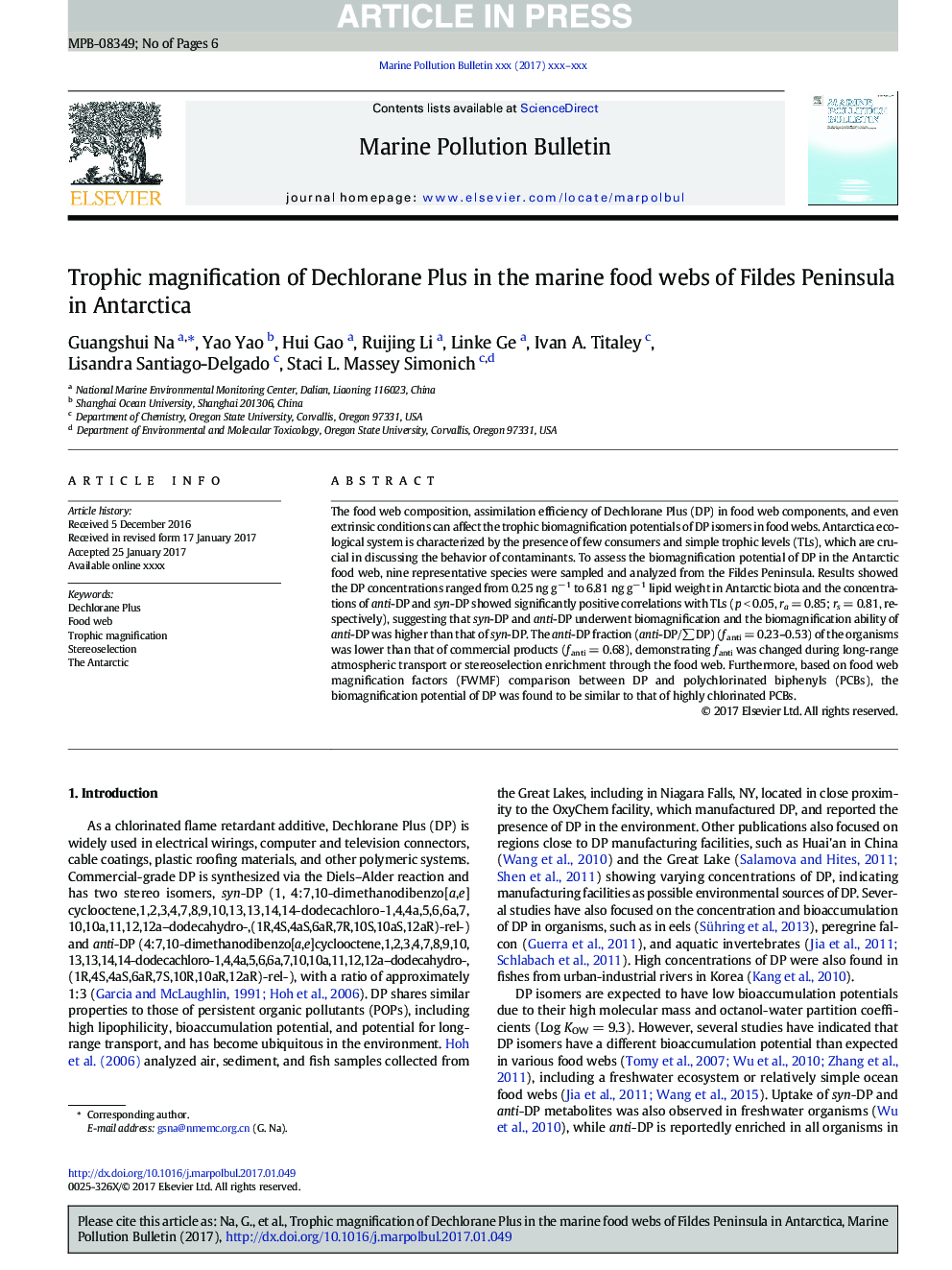| Article ID | Journal | Published Year | Pages | File Type |
|---|---|---|---|---|
| 5757557 | Marine Pollution Bulletin | 2017 | 6 Pages |
Abstract
The food web composition, assimilation efficiency of Dechlorane Plus (DP) in food web components, and even extrinsic conditions can affect the trophic biomagnification potentials of DP isomers in food webs. Antarctica ecological system is characterized by the presence of few consumers and simple trophic levels (TLs), which are crucial in discussing the behavior of contaminants. To assess the biomagnification potential of DP in the Antarctic food web, nine representative species were sampled and analyzed from the Fildes Peninsula. Results showed the DP concentrations ranged from 0.25 ng gâ 1 to 6.81 ng gâ 1 lipid weight in Antarctic biota and the concentrations of anti-DP and syn-DP showed significantly positive correlations with TLs (p < 0.05, ra = 0.85; rs = 0.81, respectively), suggesting that syn-DP and anti-DP underwent biomagnification and the biomagnification ability of anti-DP was higher than that of syn-DP. The anti-DP fraction (anti-DP/âDP) (Æanti = 0.23-0.53) of the organisms was lower than that of commercial products (Æanti = 0.68), demonstrating Æanti was changed during long-range atmospheric transport or stereoselection enrichment through the food web. Furthermore, based on food web magnification factors (FWMF) comparison between DP and polychlorinated biphenyls (PCBs), the biomagnification potential of DP was found to be similar to that of highly chlorinated PCBs.
Related Topics
Physical Sciences and Engineering
Earth and Planetary Sciences
Oceanography
Authors
Guangshui Na, Yao Yao, Hui Gao, Ruijing Li, Linke Ge, Ivan A. Titaley, Lisandra Santiago-Delgado, Staci L. Massey Simonich,
